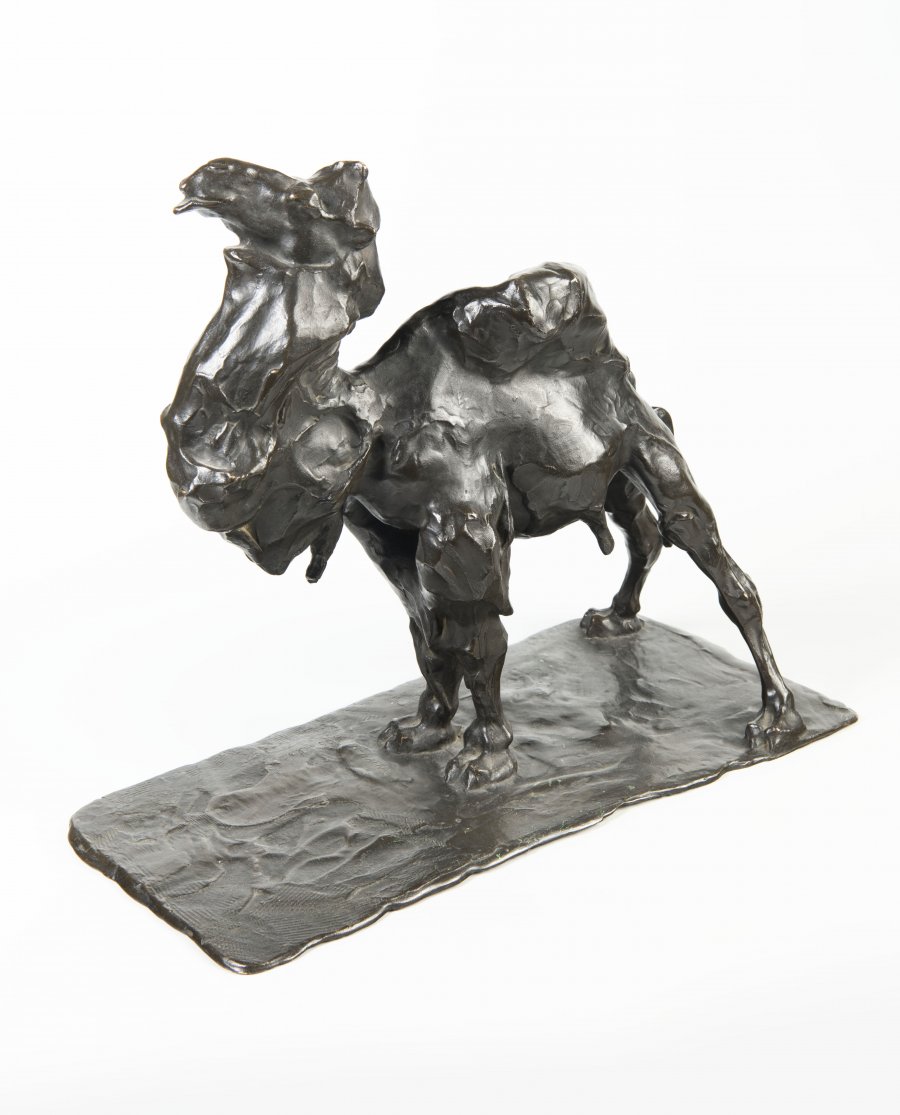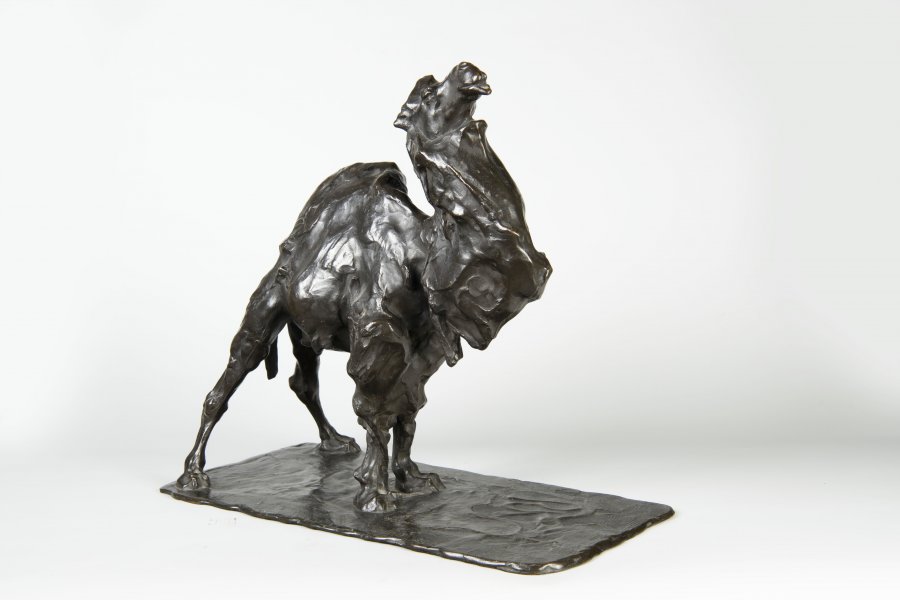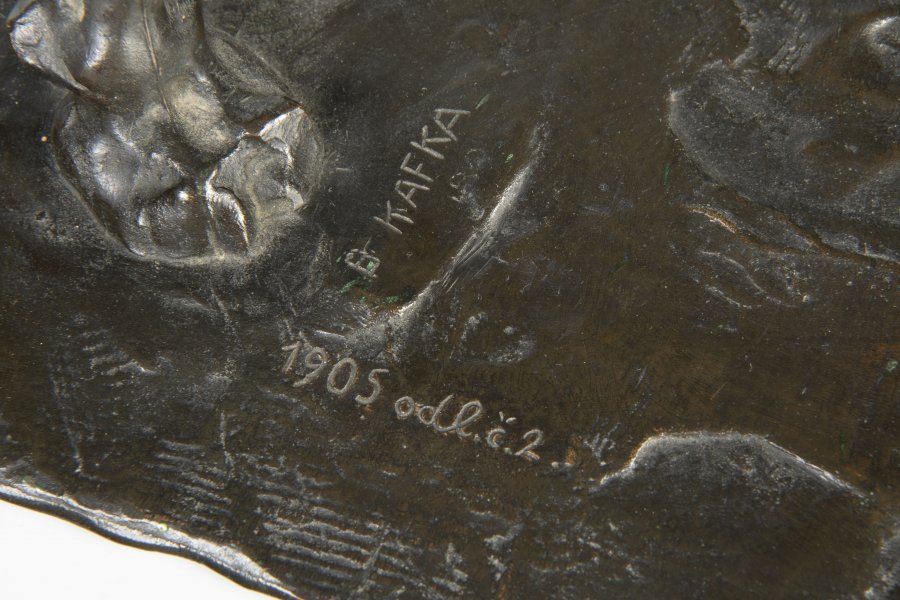Lot 66
MOULTING CAMEL
1905
36,5 x 44,5 cm (h x b)
| 3 750 EUR
| 16 667 EUR
As early as March 1905, Kafka applied to the Paris prefecture for permission to sketch animals in the Jardin des Plantes. He would always go there in the spring to draw in the mornings, and the result was the intimate sculptures of a doe and her fawns, a camel, and later an elephant, which became Kafka's most successful and sought-after sculptures. For Kafka, the contact he made with the Lithuanian workshop A. A. Hébrard. Here he also met the Italian Rembradt Bugatti. The two artists worked on the animal sculptures almost simultaneously. While Kafka concluded this series in 1908 with a sculpture of a bull, Bugatti continued his animal sculptures. Kafka's animals represent a very modern sculptural impressionism, which he continued to develop in his later works. "Kafka is not only a physiognomist, but also an excellent modeler of the nude and an animalist - his animal sculptures are the result of a synthetic vision and achieve style." Continues Petr Wittlich: "In Kafka's works there is a chill of life, an expressiveness of silhouettes, a skill of ornament and a fiery, somewhat dark imagination, an artistry and elegance of spirit." One of the key moments of Kafka's stay in Paris was a solo exhibition in 1906, comprising 27 works, which brought the artist an excellent reputation in Paris and his native Bohemia. The exhibition was favourably reviewed in the New York Herald and seven Parisian dailies reported on its opening. Bourdelle personally congratulated Kafka at the exhibition. The camel was made in only four casts, of which the one on offer is cast number 2. The offered work comes from the estate of the author from the famous Kafka's villa in Prague 6 - Ořechovka.
Published: Kafka, Bohumil and Wittlich, Petr. Bohumil Kafka: (1878-1942) : the story of a sculptor. Prague: Karolinum, 2014, p. 52.
Andere Auktionsgegenstände
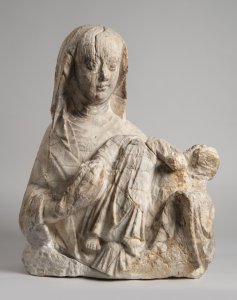
Lot 1 LATE GOTHIC MADONNA WITH CHILD
Rufpreis28 000 CZK | 1 167 EUR
Erzielter Preis
120 000 CZK | 5 000 EUR
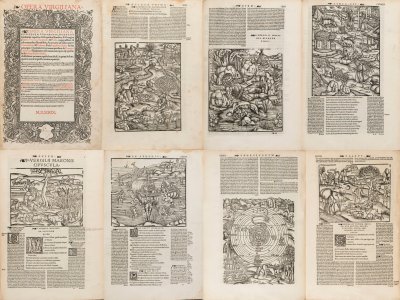
Lot 2 OPERA VIRGILIANA
Rufpreis48 000 CZK | 2 000 EUR
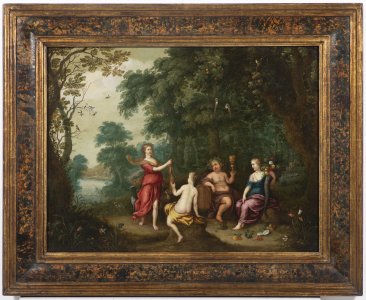
Lot 3 DIANA, BACCHUS AND FLORA
Rufpreis380 000 CZK | 15 833 EUR
Erzielter Preis
380 000 CZK | 15 833 EUR
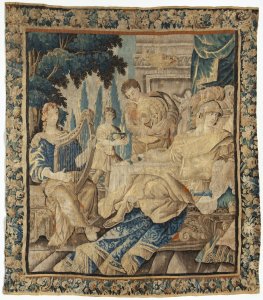
Lot 4 SCENE FROM THE BANQUET OF DIDO AND AENEAS
Rufpreis65 000 CZK | 2 708 EUR
Erzielter Preis
85 000 CZK | 3 542 EUR
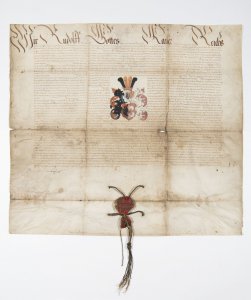
Lot 5 NOBILITATION GRANTED BY RUDOLF II.
Rufpreis80 000 CZK | 3 333 EUR
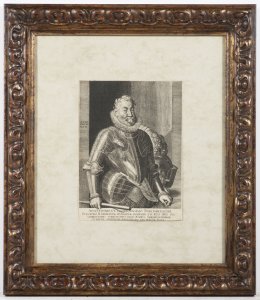
Lot 6 PORTRAIT OF RUDOLF II.
Rufpreis25 000 CZK | 1 042 EUR
Erzielter Preis
40 000 CZK | 1 667 EUR
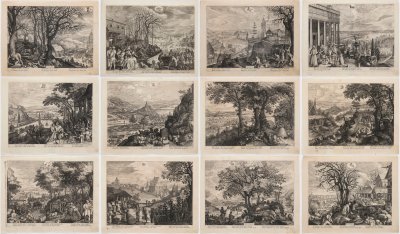
Lot 7 TWELVE MONTHS CYCLE
Rufpreis55 000 CZK | 2 292 EUR
Erzielter Preis
95 000 CZK | 3 958 EUR

Lot 8 A LARGE VIEW OF PRAGUE
Rufpreis45 000 CZK | 1 875 EUR
Erzielter Preis
65 000 CZK | 2 708 EUR
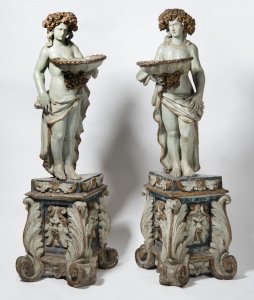
Lot 9 PAIR OF BAROQUE CARRIERS
Rufpreis180 000 CZK | 7 500 EUR
Erzielter Preis
200 000 CZK | 8 333 EUR
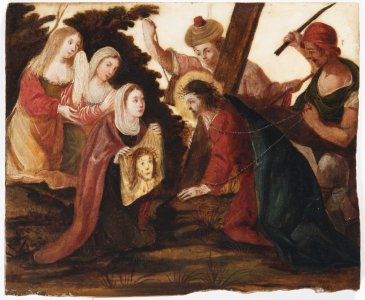
Lot 10 CHRIST AND VERONICA
Rufpreis28 000 CZK | 1 167 EUR
Erzielter Preis
28 000 CZK | 1 167 EUR
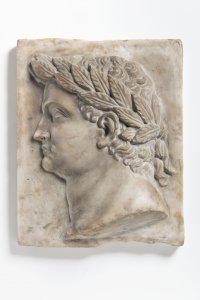
Lot 11 RENAISSANCE PORTRAIT OF THE ROMAN EMPEROR
Rufpreis16 000 CZK | 667 EUR
Erzielter Preis
21 000 CZK | 875 EUR
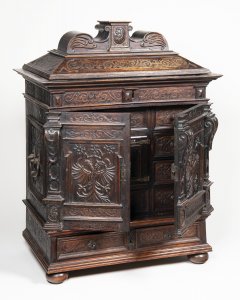
Lot 12 LATE MANNERIST CABINET
Rufpreis35 000 CZK | 1 458 EUR
Erzielter Preis
70 000 CZK | 2 917 EUR
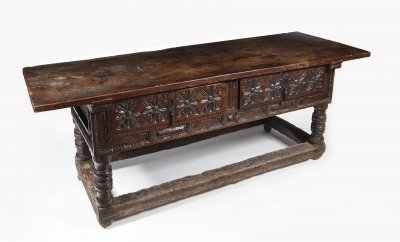
Lot 13 RENAISSANCE TABLE
Rufpreis36 000 CZK | 1 500 EUR
Erzielter Preis
95 000 CZK | 3 958 EUR
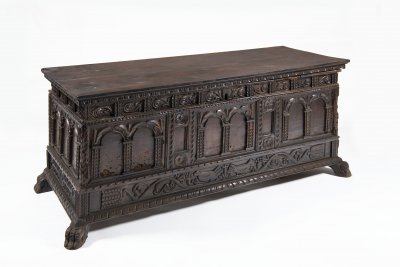
Lot 14 RENAISSANCE CHEST
Rufpreis22 000 CZK | 917 EUR
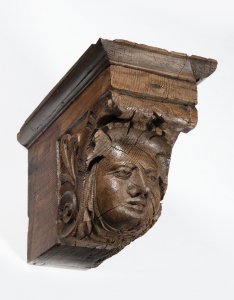
Lot 15 BAROQUE CONSOLE
Rufpreis3 000 CZK | 125 EUR
Erzielter Preis
4 500 CZK | 188 EUR
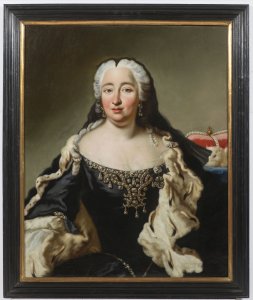
Lot 16 PORTRAIT OF ELISABETH CHRISTINE OF BRUNSWICK…
Rufpreis80 000 CZK | 3 333 EUR
Erzielter Preis
80 000 CZK | 3 333 EUR
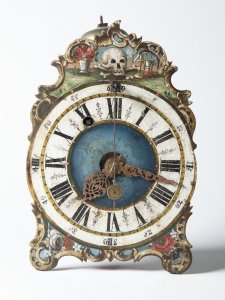
Lot 17 ROCOCO TABLE CLOCK
Rufpreis18 000 CZK | 750 EUR
Erzielter Preis
20 000 CZK | 833 EUR
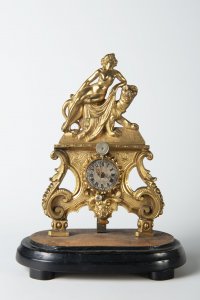
Lot 18 BAROQUE TABLE CLOCK
Rufpreis11 000 CZK | 458 EUR
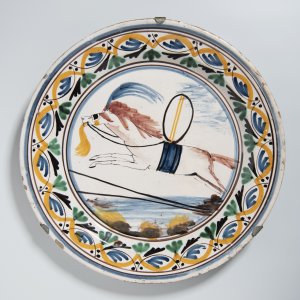
Lot 19 PLATE WITH HORSE
Rufpreis12 000 CZK | 500 EUR
Erzielter Preis
14 000 CZK | 583 EUR
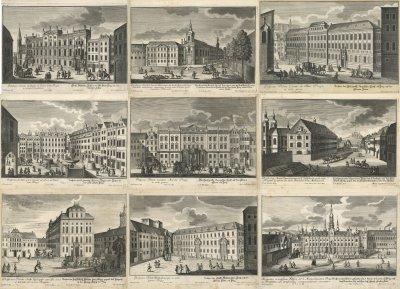
Lot 20 CONVOLUTE OF PRAGENSIA
Rufpreis30 000 CZK | 1 250 EUR
Erzielter Preis
39 000 CZK | 1 625 EUR
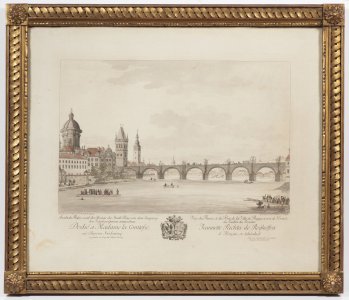
Lot 21 CHARLES BRIDGE
Rufpreis12 000 CZK | 500 EUR
Erzielter Preis
20 000 CZK | 833 EUR
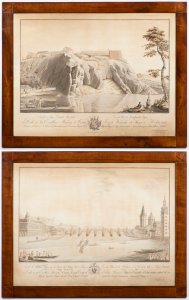
Lot 22 TWO PRAGENSIA
Rufpreis26 000 CZK | 1 083 EUR
Erzielter Preis
42 000 CZK | 1 750 EUR
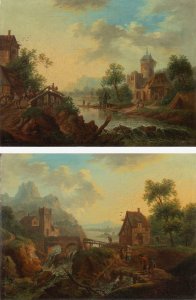
Lot 23 PAIR LANDSCAPES WITH A BRIDGE
Rufpreis35 000 CZK | 1 458 EUR
Erzielter Preis
37 000 CZK | 1 542 EUR
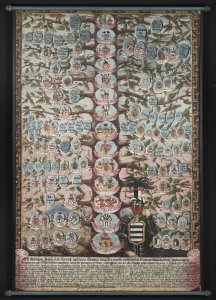
Lot 24 CLASSICISM FAMILY TREE
Rufpreis55 000 CZK | 2 292 EUR
Erzielter Preis
70 000 CZK | 2 917 EUR
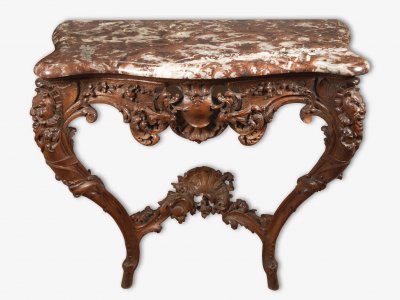
Lot 25 RÉGENCE CONSOLE TABLE
Rufpreis23 000 CZK | 958 EUR
Erzielter Preis
55 000 CZK | 2 292 EUR
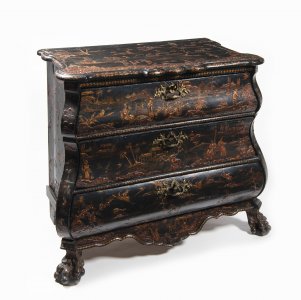
Lot 26 ROCOCO CHINOISERIE CHEST OF DRAWERS
Rufpreis30 000 CZK | 1 250 EUR
Erzielter Preis
55 000 CZK | 2 292 EUR
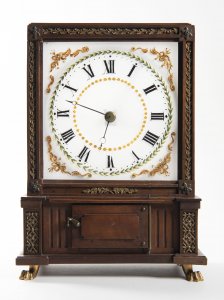
Lot 27 NIGHT CLOCK "NACHTLICHTUHR"
Rufpreis47 000 CZK | 1 958 EUR
Erzielter Preis
47 000 CZK | 1 958 EUR
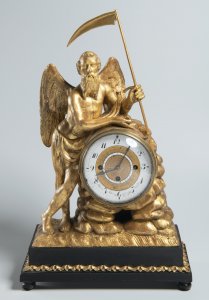
Lot 28 EMPIRE TABLE CLOCK
Rufpreis28 000 CZK | 1 167 EUR
Erzielter Preis
34 000 CZK | 1 417 EUR
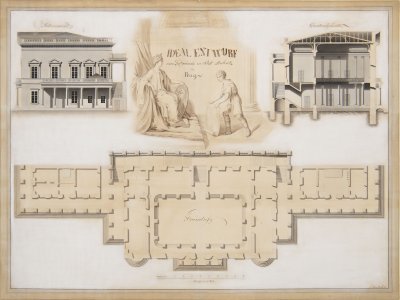
Lot 29 DESIGN OF A SUMMER PALACE IN BUBENEČ
Rufpreis46 000 CZK | 1 917 EUR
Erzielter Preis
46 000 CZK | 1 917 EUR
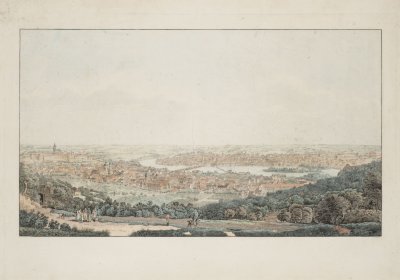
Lot 30 A VIEW OF PRAGUE FROM PETŘÍN
Rufpreis8 000 CZK | 333 EUR
Erzielter Preis
17 000 CZK | 708 EUR
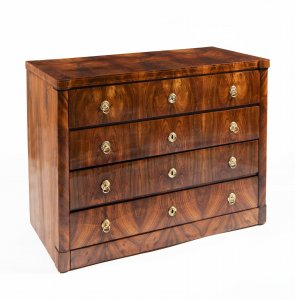
Lot 31 BIEDERMEIER CHEST OF DRAWERS
Rufpreis28 000 CZK | 1 167 EUR
Erzielter Preis
43 000 CZK | 1 792 EUR
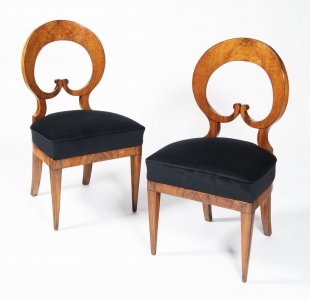
Lot 32 TWO BIEDERMEIER CHAIRS
Rufpreis20 000 CZK | 833 EUR
Erzielter Preis
20 000 CZK | 833 EUR
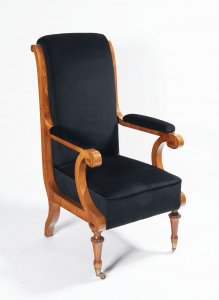
Lot 33 BIEDERMEIER ARMCHAIR
Rufpreis11 000 CZK | 458 EUR
Erzielter Preis
21 000 CZK | 875 EUR
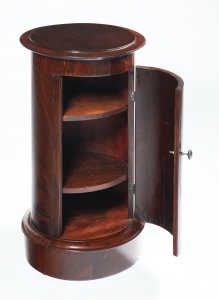
Lot 34 "SOMNO" BIEDERMEIER SIDE TABLE
Rufpreis15 000 CZK | 625 EUR
Erzielter Preis
15 000 CZK | 625 EUR
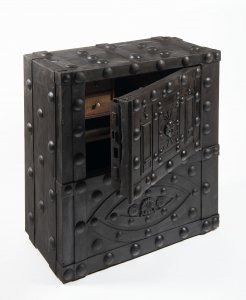
Lot 35 CLASSICISTIC IRON SAFE
Rufpreis22 000 CZK | 917 EUR
Erzielter Preis
44 000 CZK | 1 833 EUR
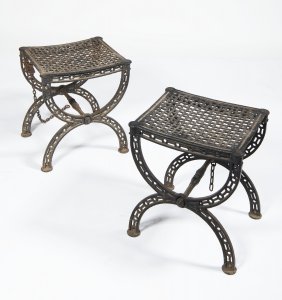
Lot 36 TWO CAST IRON STOOLS
Rufpreis18 000 CZK | 750 EUR
Erzielter Preis
37 000 CZK | 1 542 EUR
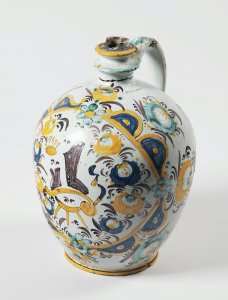
Lot 37 POSTHABAN GUILD JUG
Rufpreis12 000 CZK | 500 EUR
Erzielter Preis
25 000 CZK | 1 042 EUR
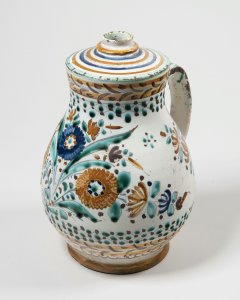
Lot 38 POSTHABAN JUG
Rufpreis10 000 CZK | 417 EUR
Erzielter Preis
10 000 CZK | 417 EUR
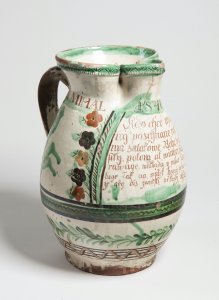
Lot 39 POSTHABAN WINEMAKERS JUG
Rufpreis16 000 CZK | 667 EUR
Erzielter Preis
20 000 CZK | 833 EUR
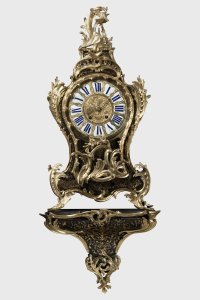
Lot 40 NAPOLEON III. CARTEL CLOCK
Rufpreis60 000 CZK | 2 500 EUR
Erzielter Preis
80 000 CZK | 3 333 EUR
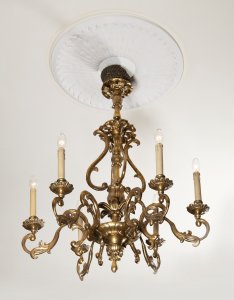
Lot 41 BAROQUE STYLE CHANDELIER
Rufpreis29 000 CZK | 1 208 EUR
Erzielter Preis
29 000 CZK | 1 208 EUR
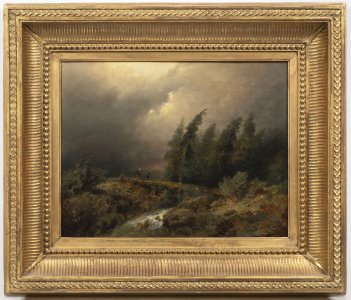
Lot 42 MOONLIT LANDSCAPE WITH A FOOTBRIDGE
Rufpreis120 000 CZK | 5 000 EUR
Erzielter Preis
270 000 CZK | 11 250 EUR
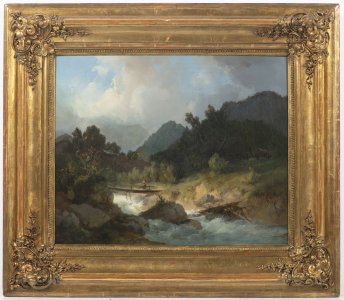
Lot 43 FOOTBRIDGE OVER THE STREAM
Rufpreis110 000 CZK | 4 583 EUR
Erzielter Preis
150 000 CZK | 6 250 EUR
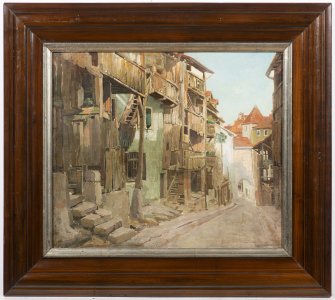
Lot 44 ALLEY IN KRUMLOV
Rufpreis50 000 CZK | 2 083 EUR
Erzielter Preis
50 000 CZK | 2 083 EUR
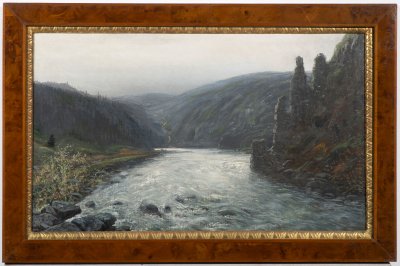
Lot 45 STONY RIVER
Rufpreis35 000 CZK | 1 458 EUR
Erzielter Preis
39 000 CZK | 1 625 EUR
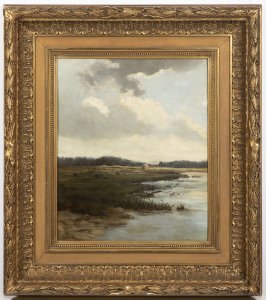
Lot 46 SOUTH BOHEMIAN POND IN THE EARLY EVENING
Rufpreis240 000 CZK | 10 000 EUR
Erzielter Preis
550 000 CZK | 22 917 EUR
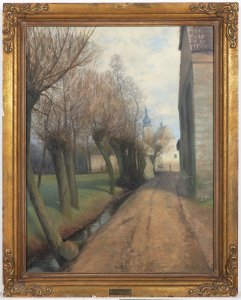
Lot 47 WILLOWS UNDER A TOWER
Rufpreis35 000 CZK | 1 458 EUR
Erzielter Preis
85 000 CZK | 3 542 EUR
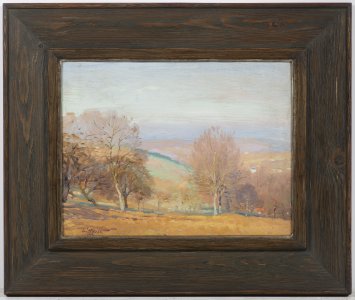
Lot 48 LANDSCAPE NEAR LUŽNICE
Rufpreis55 000 CZK | 2 292 EUR
Erzielter Preis
250 000 CZK | 10 417 EUR
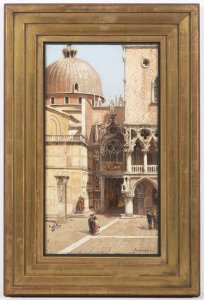
Lot 49 VENETIAN THEME
Rufpreis120 000 CZK | 5 000 EUR
Erzielter Preis
250 000 CZK | 10 417 EUR
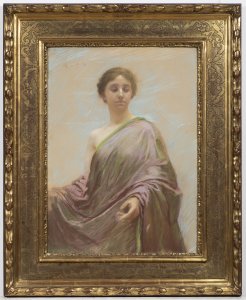
Lot 50 WOMAN WITH A DRAPERY
Rufpreis240 000 CZK | 10 000 EUR
Erzielter Preis
260 000 CZK | 10 833 EUR
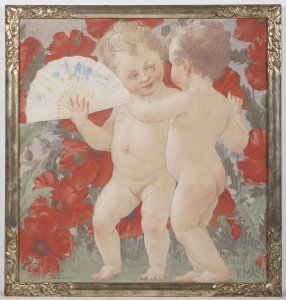
Lot 51 CHILDREN IN WILD POPPIES
Rufpreis25 000 CZK | 1 042 EUR
Erzielter Preis
25 000 CZK | 1 042 EUR
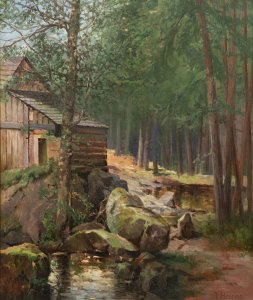
Lot 52 POND BY THE FOREST
Rufpreis30 000 CZK | 1 250 EUR
Erzielter Preis
30 000 CZK | 1 250 EUR
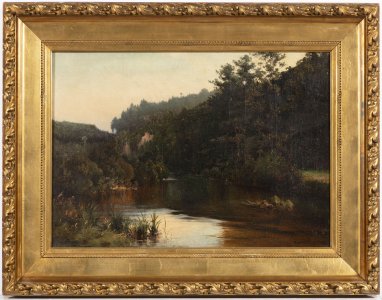
Lot 53 FOREST LAKE
Rufpreis35 000 CZK | 1 458 EUR
Erzielter Preis
60 000 CZK | 2 500 EUR
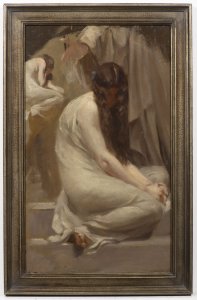
Lot 54 STUDY OF A FEMALE FIGURE
Rufpreis25 000 CZK | 1 042 EUR
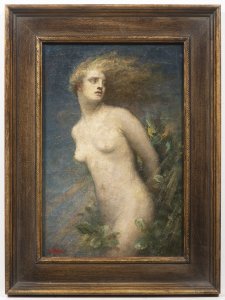
Lot 55 DAPHNE IN THE STORM BEFORE THE TRANSFORMATION
Rufpreis15 000 CZK | 625 EUR
Erzielter Preis
18 000 CZK | 750 EUR
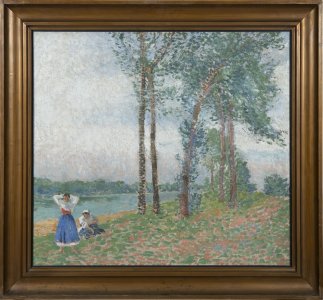
Lot 56 GIRLS BY THE RIVER
Rufpreis180 000 CZK | 7 500 EUR
Erzielter Preis
300 000 CZK | 12 500 EUR
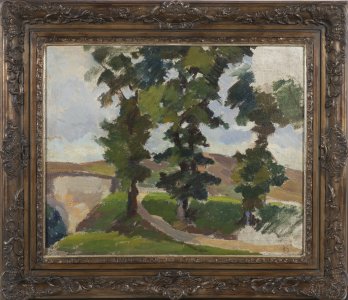
Lot 57 THREE TREES
Rufpreis230 000 CZK | 9 583 EUR
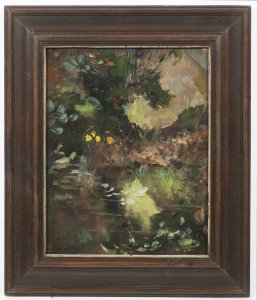
Lot 58 WOODLAND POND
Rufpreis28 000 CZK | 1 167 EUR
Erzielter Preis
32 000 CZK | 1 333 EUR
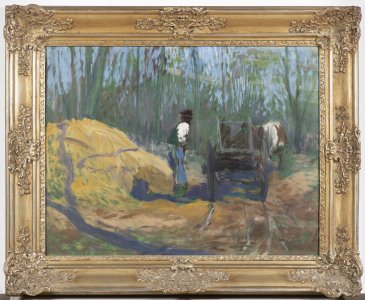
Lot 59 CARRIAGE ON THE FOREST PATH
Rufpreis40 000 CZK | 1 667 EUR
Erzielter Preis
160 000 CZK | 6 667 EUR
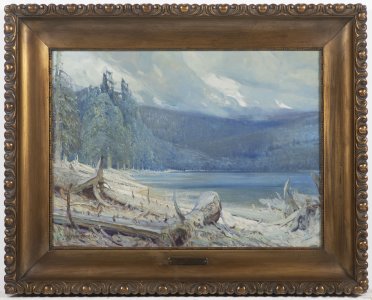
Lot 60 BLACK LAKE
Rufpreis24 000 CZK | 1 000 EUR
Erzielter Preis
36 000 CZK | 1 500 EUR
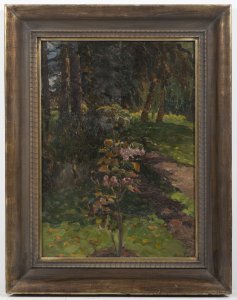
Lot 61 FOREST PATH
Rufpreis28 000 CZK | 1 167 EUR
Erzielter Preis
28 000 CZK | 1 167 EUR
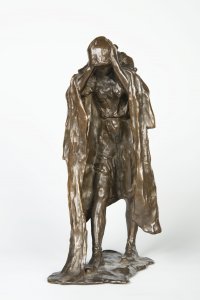
Lot 62 WOMAN ADJUSTING HER HAIR AFTER BATH
Rufpreis65 000 CZK | 2 708 EUR
Erzielter Preis
150 000 CZK | 6 250 EUR
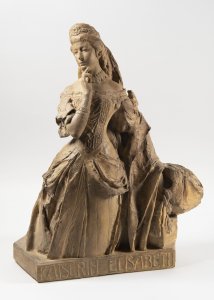
Lot 63 EMPRESS ELISABETH
Rufpreis65 000 CZK | 2 708 EUR
Erzielter Preis
65 000 CZK | 2 708 EUR
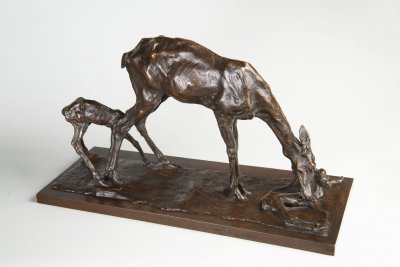
Lot 64 DOE AND FAWNS
Rufpreis90 000 CZK | 3 750 EUR
Erzielter Preis
320 000 CZK | 13 333 EUR
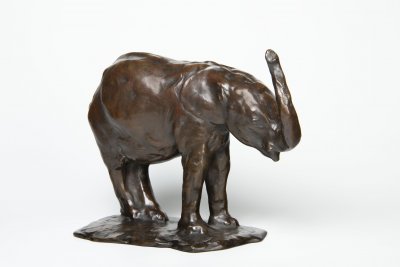
Lot 65 BABY ELEPHANT
Rufpreis60 000 CZK | 2 500 EUR
Erzielter Preis
180 000 CZK | 7 500 EUR
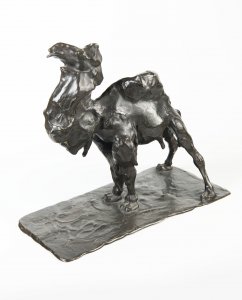
Lot 66 MOULTING CAMEL
Rufpreis90 000 CZK | 3 750 EUR
Erzielter Preis
400 000 CZK | 16 667 EUR
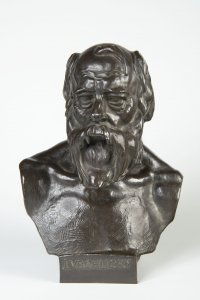
Lot 67 JAROSLAV VRCHLICKÝ
Rufpreis18 000 CZK | 750 EUR
Erzielter Preis
26 000 CZK | 1 083 EUR
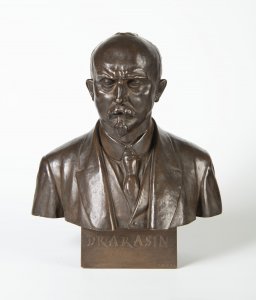
Lot 68 DR. ALOIS RAŠÍN
Rufpreis15 000 CZK | 625 EUR
Erzielter Preis
17 000 CZK | 708 EUR
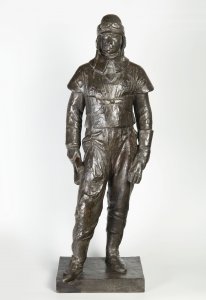
Lot 69 GENERÁL M. R. ŠTEFÁNIK
Rufpreis65 000 CZK | 2 708 EUR
Erzielter Preis
450 000 CZK | 18 750 EUR
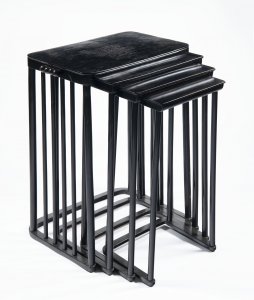
Lot 70 NESTING TABLES
Rufpreis29 000 CZK | 1 208 EUR
Erzielter Preis
33 000 CZK | 1 375 EUR
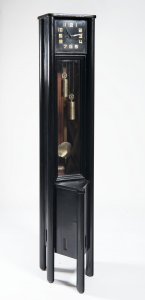
Lot 71 ART NOUVEAU LONGCASE CLOCK
Rufpreis28 000 CZK | 1 167 EUR
Erzielter Preis
28 000 CZK | 1 167 EUR
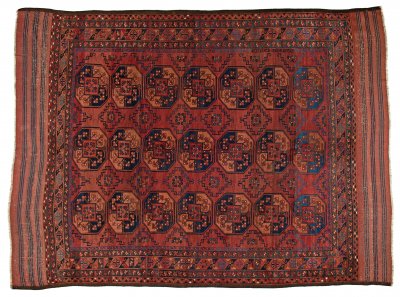
Lot 72 ERSARI RUG
Rufpreis30 000 CZK | 1 250 EUR
Erzielter Preis
30 000 CZK | 1 250 EUR
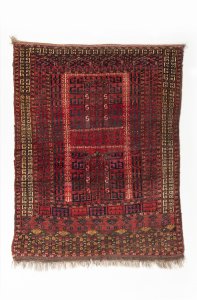
Lot 73 SARYK ENGSI RUG
Rufpreis10 000 CZK | 417 EUR
Erzielter Preis
10 000 CZK | 417 EUR
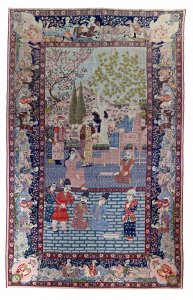
Lot 74 TABRÍZ PICTORIAL RUG
Rufpreis90 000 CZK | 3 750 EUR
Erzielter Preis
90 000 CZK | 3 750 EUR
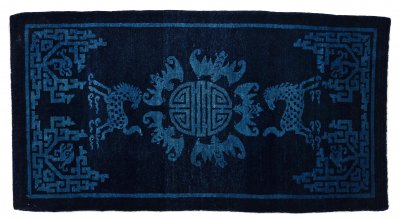
Lot 75 BEIJING RUG
Rufpreis21 000 CZK | 875 EUR

Lot 76 SEYCHOUR RUNNER
Rufpreis47 000 CZK | 1 958 EUR
Erzielter Preis
47 000 CZK | 1 958 EUR
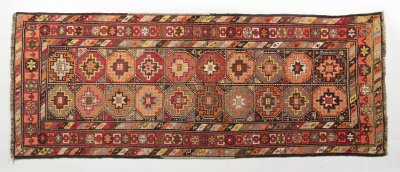
Lot 77 LURISTAN RUNNER
Rufpreis9 000 CZK | 375 EUR
Erzielter Preis
17 000 CZK | 708 EUR
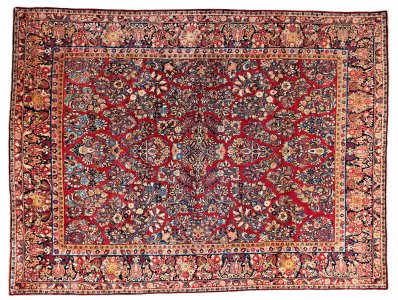
Lot 78 SAROUK RUG
Rufpreis36 000 CZK | 1 500 EUR
Erzielter Preis
36 000 CZK | 1 500 EUR
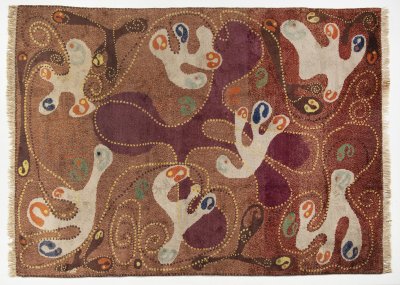
Lot 79 FIRST-REPUBLIC RUG
Rufpreis28 000 CZK | 1 167 EUR
Erzielter Preis
44 000 CZK | 1 833 EUR
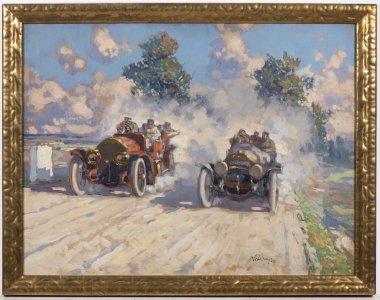
Lot 80 DIRECT MATCH
Rufpreis60 000 CZK | 2 500 EUR
Erzielter Preis
120 000 CZK | 5 000 EUR
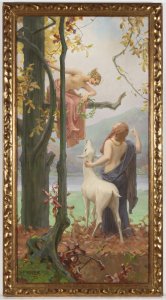
Lot 81 ALLEGORY OF SPRING
Rufpreis65 000 CZK | 2 708 EUR
Erzielter Preis
140 000 CZK | 5 833 EUR
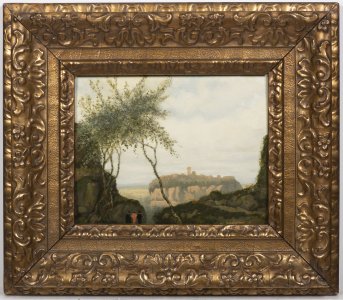
Lot 82 WAY TO EMMAUS
Rufpreis11 000 CZK | 458 EUR
Erzielter Preis
19 000 CZK | 792 EUR
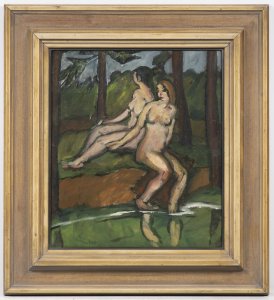
Lot 83 BATHING
Rufpreis50 000 CZK | 2 083 EUR
Erzielter Preis
50 000 CZK | 2 083 EUR
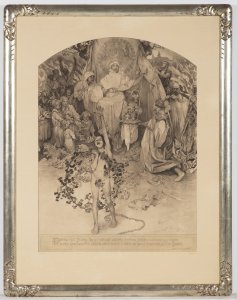
Lot 84 PROCITNUTÍ NÁRODA
Rufpreis14 000 CZK | 583 EUR
Erzielter Preis
17 000 CZK | 708 EUR
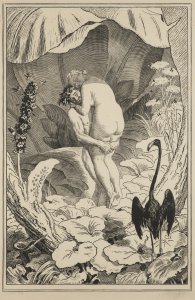
Lot 85 ABDUCTION, FROM THE CYCLE PARADISE SONATA
Rufpreis15 000 CZK | 625 EUR
Erzielter Preis
38 000 CZK | 1 583 EUR
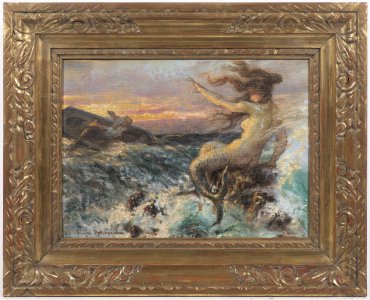
Lot 86 NAIAD
Rufpreis140 000 CZK | 5 833 EUR
Erzielter Preis
190 000 CZK | 7 917 EUR
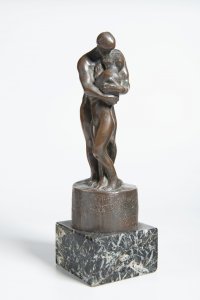
Lot 87 MAY
Rufpreis20 000 CZK | 833 EUR
Erzielter Preis
41 000 CZK | 1 708 EUR
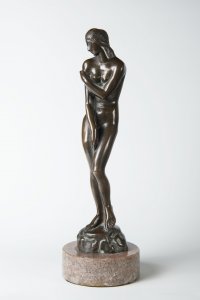
Lot 88 VENUS
Rufpreis22 000 CZK | 917 EUR
Erzielter Preis
27 000 CZK | 1 125 EUR
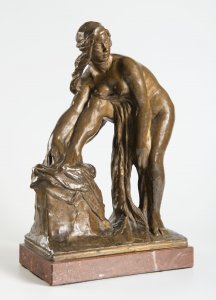
Lot 89 AFTER BATH
Rufpreis25 000 CZK | 1 042 EUR
Erzielter Preis
36 000 CZK | 1 500 EUR
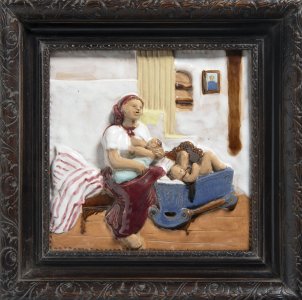
Lot 90 LULLABY
Rufpreis10 000 CZK | 417 EUR
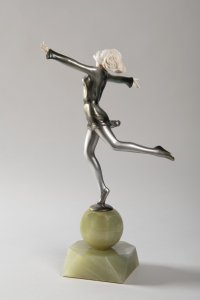
Lot 91 DANCER
Rufpreis19 000 CZK | 792 EUR
Erzielter Preis
30 000 CZK | 1 250 EUR
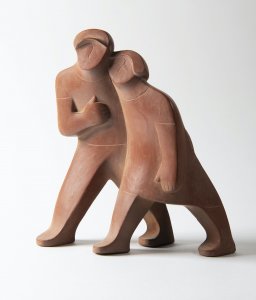
Lot 92 WALKING COUPLE
Rufpreis35 000 CZK | 1 458 EUR
Erzielter Preis
45 000 CZK | 1 875 EUR
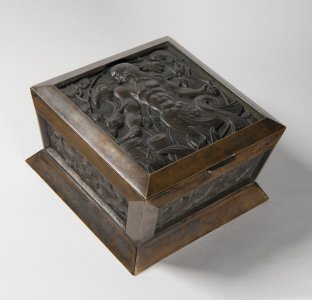
Lot 93 ART DECO BOX
Rufpreis14 000 CZK | 583 EUR
Erzielter Preis
41 000 CZK | 1 708 EUR
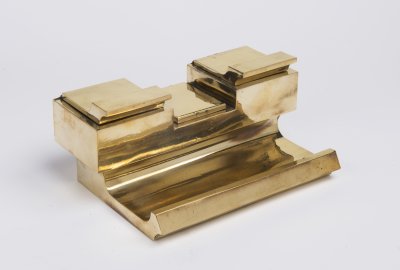
Lot 94 ARTĚL INKWELL
Rufpreis40 000 CZK | 1 667 EUR
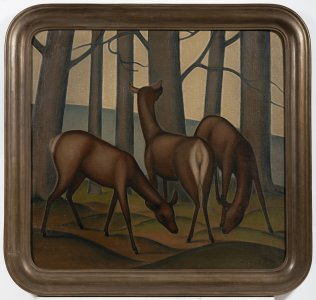
Lot 95 THREE DOES
Rufpreis30 000 CZK | 1 250 EUR
Erzielter Preis
30 000 CZK | 1 250 EUR
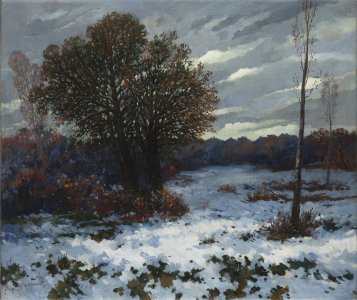
Lot 96 WINTER LANDSCAPE
Rufpreis32 000 CZK | 1 333 EUR
Erzielter Preis
43 000 CZK | 1 792 EUR
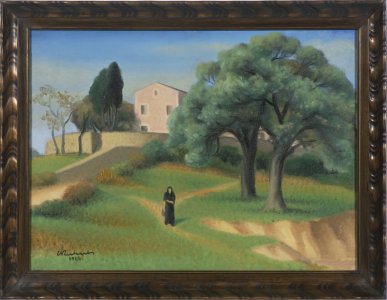
Lot 97 FROM CORSICA
Rufpreis65 000 CZK | 2 708 EUR
Erzielter Preis
65 000 CZK | 2 708 EUR
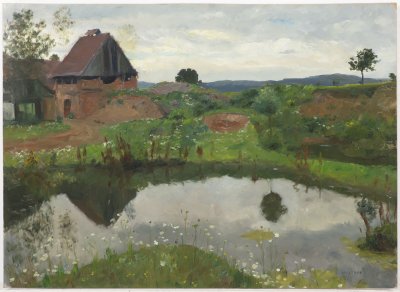
Lot 98 LANDSCAPE WITH A POND
Rufpreis20 000 CZK | 833 EUR
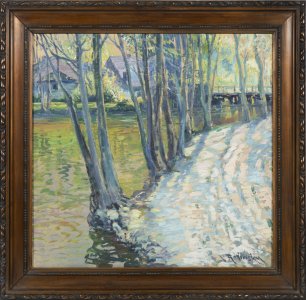
Lot 99 ELBE NEAR STARÝ KOLÍN
Rufpreis240 000 CZK | 10 000 EUR
Erzielter Preis
240 000 CZK | 10 000 EUR
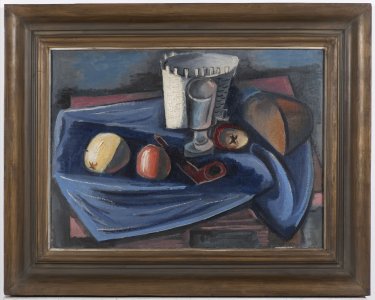
Lot 100 STILL LIFE WITH APPLES, BREAD AND PIPE
Rufpreis450 000 CZK | 18 750 EUR
Erzielter Preis
1 500 000 CZK | 62 500 EUR
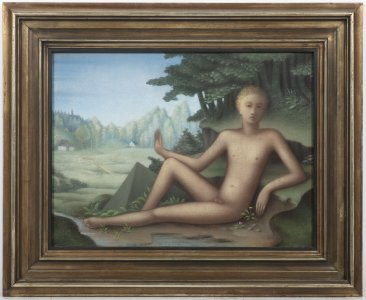
Lot 101 SPRING
Rufpreis3 200 000 CZK | 133 333 EUR
Erzielter Preis
4 400 000 CZK | 183 333 EUR
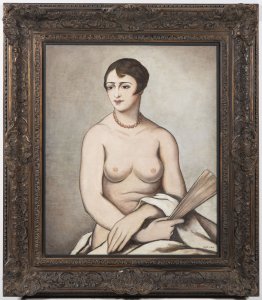
Lot 102 NUDE WITH A FAN
Rufpreis120 000 CZK | 5 000 EUR
Erzielter Preis
120 000 CZK | 5 000 EUR
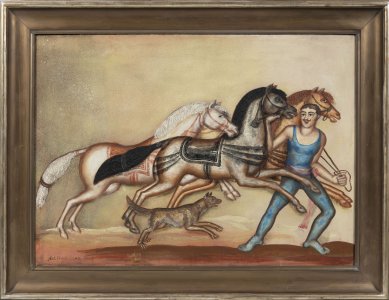
Lot 103 THE HORSE TAMER
Rufpreis800 000 CZK | 33 333 EUR
Erzielter Preis
800 000 CZK | 33 333 EUR
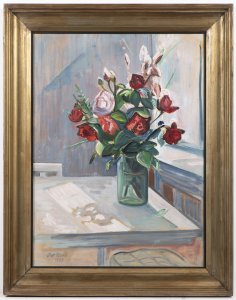
Lot 104 STILL LIFE WITH A BOUQUET
Rufpreis90 000 CZK | 3 750 EUR
Erzielter Preis
250 000 CZK | 10 417 EUR
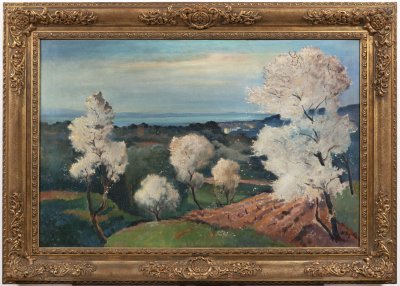
Lot 106 MARCH IN CORSICA
Rufpreis90 000 CZK | 3 750 EUR
Erzielter Preis
90 000 CZK | 3 750 EUR
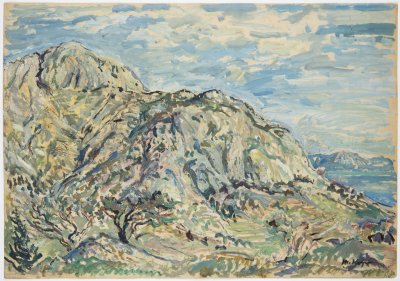
Lot 107 FROM THE SOUTH
Rufpreis48 000 CZK | 2 000 EUR
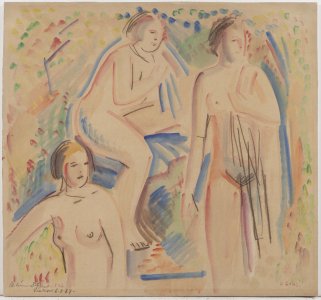
Lot 108 BATHING
Rufpreis12 000 CZK | 500 EUR
Erzielter Preis
13 000 CZK | 542 EUR
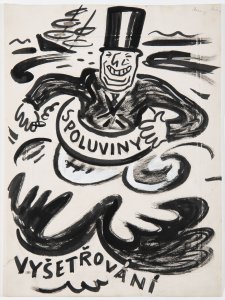
Lot 109 THE CORRUPTER IN THE PUDDLE
Rufpreis38 000 CZK | 1 583 EUR
Erzielter Preis
60 000 CZK | 2 500 EUR
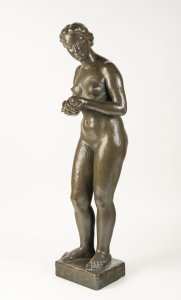
Lot 110 WOMAN WITH APPLE III
Rufpreis140 000 CZK | 5 833 EUR
Erzielter Preis
200 000 CZK | 8 333 EUR
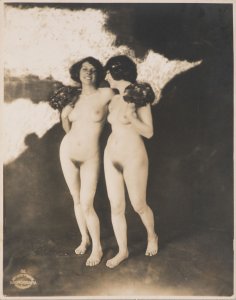
Lot 111 NUDE 66
Rufpreis20 000 CZK | 833 EUR
Erzielter Preis
25 000 CZK | 1 042 EUR
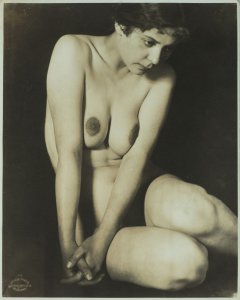
Lot 112 NUDE 44
Rufpreis20 000 CZK | 833 EUR
Erzielter Preis
20 000 CZK | 833 EUR
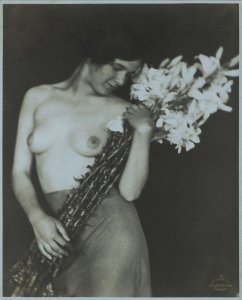
Lot 113 NUDE 43
Rufpreis20 000 CZK | 833 EUR
Erzielter Preis
20 000 CZK | 833 EUR
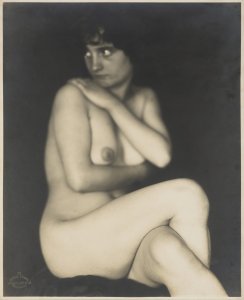
Lot 114 NUDE 32
Rufpreis20 000 CZK | 833 EUR
Erzielter Preis
20 000 CZK | 833 EUR
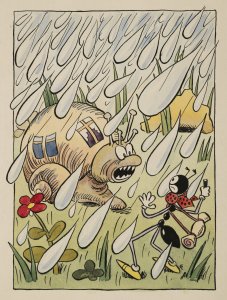
Lot 115 HOW MR. SNAIL CURSED UNKINDLY
Rufpreis40 000 CZK | 1 667 EUR
Erzielter Preis
130 000 CZK | 5 417 EUR
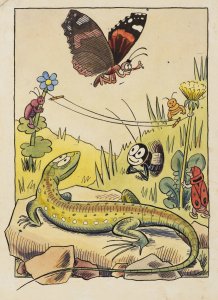
Lot 116 JAK PANU CVRČKOVI NEHRÁLO RÁDIO
Rufpreis40 000 CZK | 1 667 EUR
Erzielter Preis
100 000 CZK | 4 167 EUR
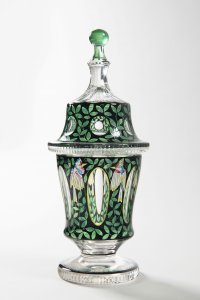
Lot 117 GLASS GOBLET
Rufpreis6 000 CZK | 250 EUR
Erzielter Preis
9 500 CZK | 396 EUR
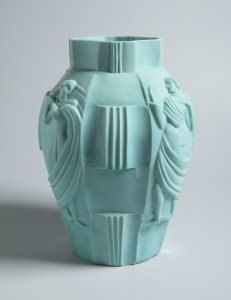
Lot 118 VASE INGRID
Rufpreis5 000 CZK | 208 EUR
Erzielter Preis
9 500 CZK | 396 EUR
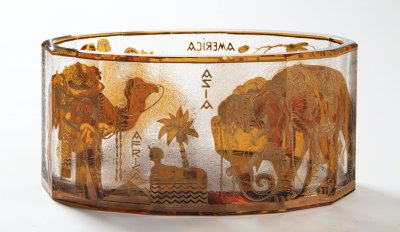
Lot 119 BOWL WITH ALLEGORIES OF CONTINENTS
Rufpreis9 000 CZK | 375 EUR
Erzielter Preis
13 000 CZK | 542 EUR
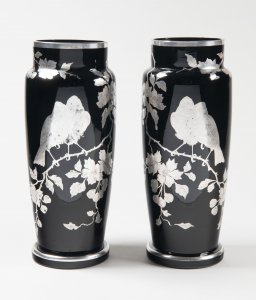
Lot 120 PAIR OF VASES
Rufpreis5 000 CZK | 208 EUR
Erzielter Preis
5 000 CZK | 208 EUR
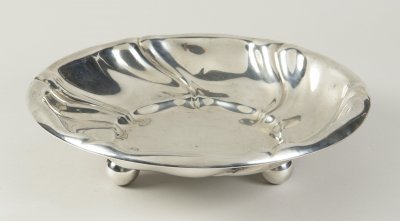
Lot 121 SILVER BOWL
Rufpreis4 000 CZK | 167 EUR
Erzielter Preis
5 500 CZK | 229 EUR
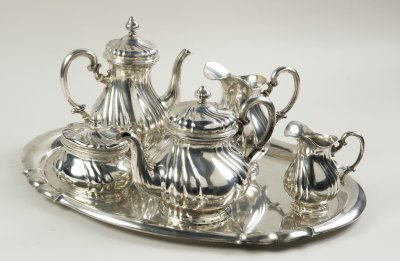
Lot 122 SILVER TEA AND COFFEE SERVICE
Rufpreis30 000 CZK | 1 250 EUR
Erzielter Preis
60 000 CZK | 2 500 EUR
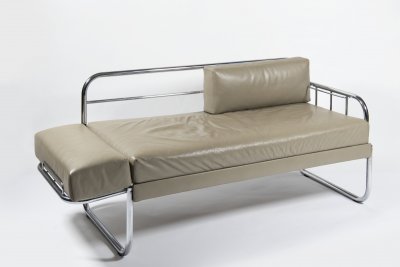
Lot 123 FUNCTIONALIST DAY BED
Rufpreis12 000 CZK | 500 EUR
Erzielter Preis
17 000 CZK | 708 EUR
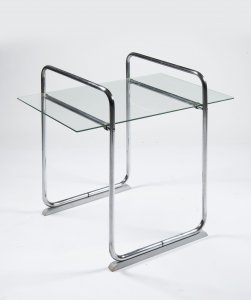
Lot 124 FUNCTIONALIST SIDE TABLE
Rufpreis7 000 CZK | 292 EUR
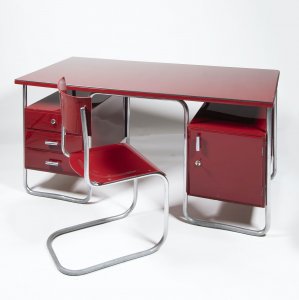
Lot 125 WRITING DESK 1287 AND CHAIR
Rufpreis28 000 CZK | 1 167 EUR
Erzielter Preis
42 000 CZK | 1 750 EUR
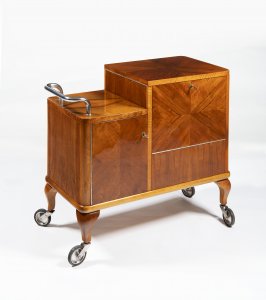
Lot 126 FUNCTIONALIST SERVING BAR CART
Rufpreis18 000 CZK | 750 EUR
Erzielter Preis
33 000 CZK | 1 375 EUR
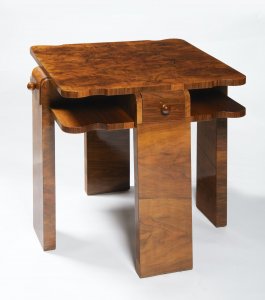
Lot 127 ART DECO PLAYING TABLE
Rufpreis18 000 CZK | 750 EUR
Erzielter Preis
18 000 CZK | 750 EUR
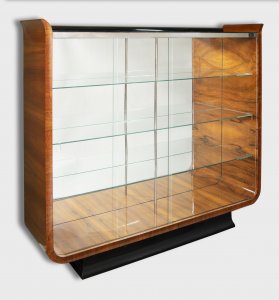
Lot 128 "TULIP" SHOWCASE
Rufpreis90 000 CZK | 3 750 EUR
Erzielter Preis
150 000 CZK | 6 250 EUR
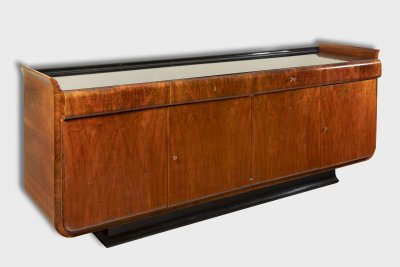
Lot 129 "TULIP" SIDE BOARD
Rufpreis80 000 CZK | 3 333 EUR
Erzielter Preis
110 000 CZK | 4 583 EUR
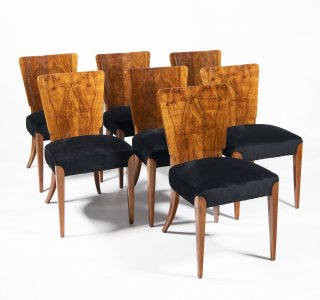
Lot 130 SET OF SEVEN ART DECO CHAIRS
Rufpreis45 000 CZK | 1 875 EUR
Erzielter Preis
140 000 CZK | 5 833 EUR
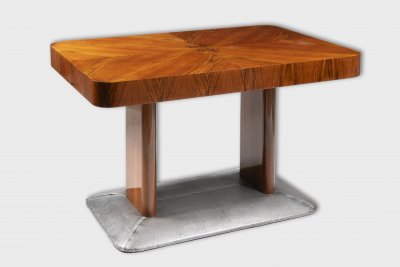
Lot 131 ART DECO DINING TABLE
Rufpreis25 000 CZK | 1 042 EUR
Erzielter Preis
130 000 CZK | 5 417 EUR
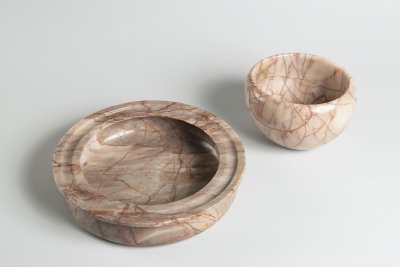
Lot 132 TWO MARBLE BOWLS
Rufpreis10 000 CZK | 417 EUR
Erzielter Preis
21 000 CZK | 875 EUR
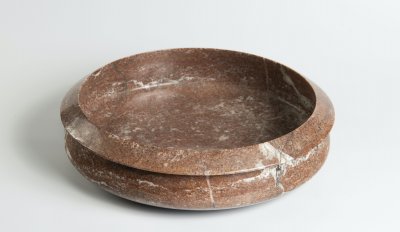
Lot 133 MARBLE BOWL
Rufpreis7 000 CZK | 292 EUR
Erzielter Preis
14 000 CZK | 583 EUR

